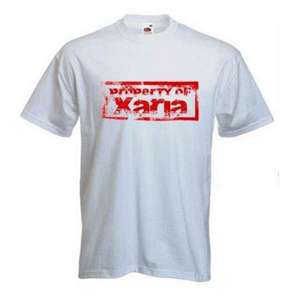Playful Disruption of Digital Media: Gaming Media and Social Effects
Editat de Daniel Cermak-Sassenrathen Limba Engleză Hardback – 17 apr 2018
This book starts with the proposition that digital media invite play and indeed need to be played by their everyday users. Play is probably one of the most visible and powerful ways to appropriate the digital world. The diverse, emerging practices of digital media appear to be essentially playful: Users are involved and active, produce form and content, spread, exchange and consume it, take risks, are conscious of their own goals and the possibilities of achieving them, are skilled and know how to acquire more skills. They share a perspective of can-do, a curiosity of what happens next? Play can be observed in social, economic, political, artistic, educational and criminal contexts and endeavours. It is employed as a (counter) strategy, for tacit or open resistance, as a method and productive practice, and something people do for fun.
The book aims to define a particular contemporary attitude, a playful approach to media. It identifies some common ground and key principles in this novel terrain. Instead of looking at play and how it branches into different disciplines like business and education, the phenomenon of play in digital media is approached unconstrained by disciplinary boundaries. The contributions in this book provide a glimpse of a playful technological revolution that is a joyful celebration of possibilities that new media afford. This book is not a practical guide on how to hack a system or to pirate music, but provides critical insights into the unintended, artistic, fun, subversive, and sometimes dodgy applications of digital media.
Contributions from Chris Crawford, Mathias Fuchs, Rilla Khaled, Sybille Lammes, Eva and Franco Mattes, Florian 'Floyd' Mueller, Michael Nitsche, Julian Oliver, and others cover and address topics such as reflective game design, identity and people's engagement in online media, conflicts and challenging opportunities for play, playing with cartographical interfaces, player-emergent production practices, the re-purposing of data, game creation as an educational approach, the ludification of society, the creation of meaning within and without play, the internalisation and subversion of roles through play, and the boundaries of play.
| Toate formatele și edițiile | Preț | Express |
|---|---|---|
| Paperback (1) | 642.18 lei 6-8 săpt. | |
| Springer Nature Singapore – 4 ian 2019 | 642.18 lei 6-8 săpt. | |
| Hardback (1) | 648.42 lei 6-8 săpt. | |
| Springer Nature Singapore – 17 apr 2018 | 648.42 lei 6-8 săpt. |
Preț: 648.42 lei
Preț vechi: 762.85 lei
-15% Nou
Puncte Express: 973
Preț estimativ în valută:
124.09€ • 128.76$ • 103.72£
124.09€ • 128.76$ • 103.72£
Carte tipărită la comandă
Livrare economică 17-31 martie
Preluare comenzi: 021 569.72.76
Specificații
ISBN-13: 9789811018893
ISBN-10: 9811018898
Pagini: 200
Ilustrații: XIX, 310 p. 106 illus., 89 illus. in color.
Dimensiuni: 155 x 235 mm
Greutate: 0.64 kg
Ediția:1st ed. 2018
Editura: Springer Nature Singapore
Colecția Springer
Seria Gaming Media and Social Effects
Locul publicării:Singapore, Singapore
ISBN-10: 9811018898
Pagini: 200
Ilustrații: XIX, 310 p. 106 illus., 89 illus. in color.
Dimensiuni: 155 x 235 mm
Greutate: 0.64 kg
Ediția:1st ed. 2018
Editura: Springer Nature Singapore
Colecția Springer
Seria Gaming Media and Social Effects
Locul publicării:Singapore, Singapore
Cuprins
From the Contents: Introduction: The subversive nature of play/games.- Part I Play,learning and reflection.- Questions Over Answers: Reflective Game Design.- The Phylogeny of Play.- Bodies in Play: Shifting between the virtual and physical body as a play element.- Blending & Blurring: Experiences with a Political Art Game.- Part II System,society,empowerment.
Notă biografică
Daniel Cermak-Sassenrath is Associate Professor at the IT University of Copenhagen (ITU), and member of the Center for Computer Games Research (game.itu.dk) and the Pervasive Interaction Technology Lab (PitLab, pitlab.itu.dk). Daniel writes, composes, codes, builds, performs and plays. He is interested in artistic, analytic, explorative, critical and subversive approaches to and practices of play. Discourses he is specifically interested in, are play and materiality, play and learning, and critical play.
Textul de pe ultima copertă
This book starts with the proposition that digital media invite play and indeed need to be played by their everyday users. Play is probably one of the most visible and powerful ways to appropriate the digital world. The diverse, emerging practices of digital media appear to be essentially playful: Users are involved and active, produce form and content, spread, exchange and consume it, take risks, are conscious of their own goals and the possibilities of achieving them, are skilled and know how to acquire more skills. They share a perspective of can-do, a curiosity of what happens next? Play can be observed in social, economic, political, artistic, educational and criminal contexts and endeavours. It is employed as a (counter) strategy, for tacit or open resistance, as a method and productive practice, and something people do for fun.
The book aims to define a particular contemporary attitude, a playful approach to media. It identifies some common ground and key principles in this novel terrain. Instead of looking at play and how it branches into different disciplines like business and education, the phenomenon of play in digital media is approached unconstrained by disciplinary boundaries. The contributions in this book provide a glimpse of a playful technological revolution that is a joyful celebration of possibilities that new media afford. This book is not a practical guide on how to hack a system or to pirate music, but provides critical insights into the unintended, artistic, fun, subversive, and sometimes dodgy applications of digital media.
Contributions from Chris Crawford, Mathias Fuchs, Rilla Khaled, Sybille Lammes, Eva and Franco Mattes, Florian 'Floyd' Mueller, Michael Nitsche, Julian Oliver, and others cover and address topics such as reflective game design, identity and people's engagement in online media, conflicts and challenging opportunities for play, playing with cartographical interfaces, player-emergent production practices, the re-purposing of data, game creation as an educational approach, the ludification of society, the creation of meaning within and without play, the internalisation and subversion of roles through play, and the boundaries of play.
Caracteristici
Provides an accessible overview of an emerging field for students, teachers, practitioners, and industry professionals alike Introduces readers to differing and provocative perspectives across scientific, technological, and artistic fields/domains through a novel interdisciplinary approach Bridges academic research, art, play, media studies, cultural/social science, and practical approaches Written by leading international experts

























